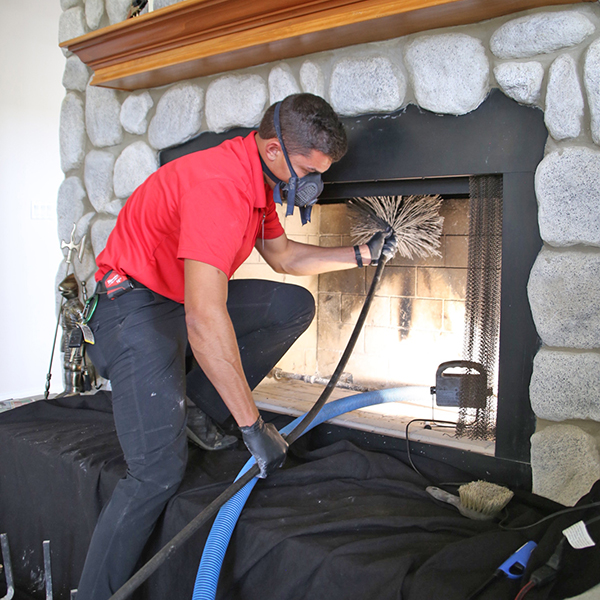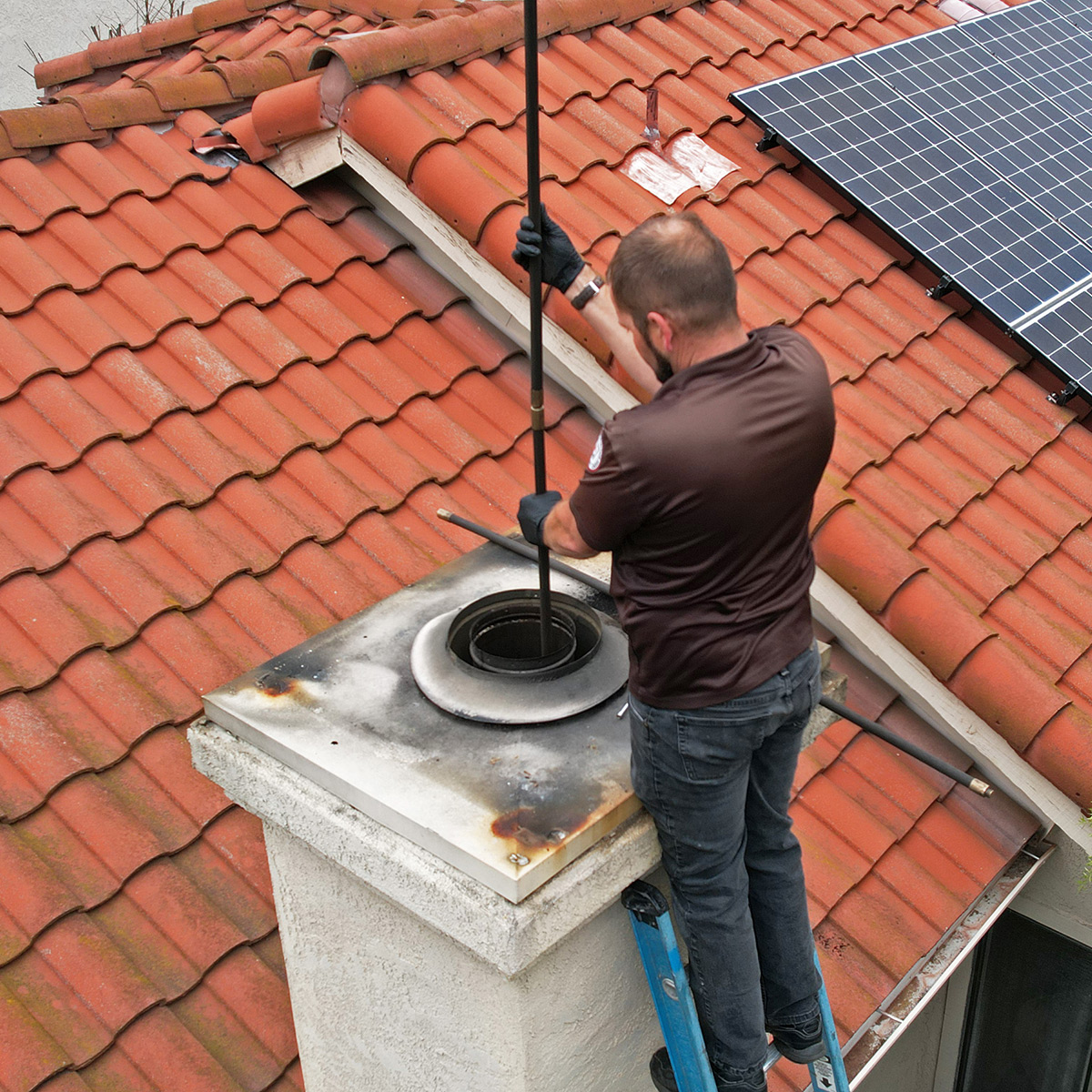Elevate Your Home Comfort: Chimney Clean San Jose Services You Can Trust
Elevate Your Home Comfort: Chimney Clean San Jose Services You Can Trust
Blog Article
Chimney Cleaning: A Step-by-Step Guide to Preserving a Healthy And Balanced Fire Place
Maintaining a healthy fireplace is critical for the safety and efficiency of your home. Routine chimney cleaning is a vital part of this maintenance routine. In this step-by-step guide, we will supply you with thorough guidelines on how to properly clean your chimney, making sure that it operates ideally and lowers the risk of fire hazards. By following these guidelines, you will learn how to gather the necessary devices, execute an aesthetic examination, clear particles and build-up, sweep the chimney, and finish the last actions for recurring upkeep. With a specialist strategy and focus to information, you can with confidence care for your fireplace and enjoy its warmth and comfort for years to come.
Collecting the Needed Tools
To start the process of smokeshaft cleansing, the very first step is to gather all the necessary devices. Having the right tools handy makes sure a effective and safe cleansing process. The crucial tools for smokeshaft cleaning consist of a chimney brush, a ladder, ground cloth or plastic sheets, a flashlight, handwear covers, and a dust mask.
The chimney brush is the main tool made use of to remove residue and creosote buildup from the flue. It is essential to select a brush that matches the dimension and shape of your smokeshaft. Additionally, a strong ladder is necessary to access the smokeshaft securely. Make certain the ladder is stable and positioned on a flat surface.
A flashlight is essential for inspecting the smokeshaft's inside for any kind of signs of damage or obstructions. Gloves are required to secure your hands from soot and other damaging compounds, while a dirt mask aids protect against the breathing of particles.
Performing an Aesthetic Inspection

Making use of a flashlight, carefully analyze the indoor wall surfaces of the smokeshaft for any kind of indicators of damage, such as cracks, loose bricks, or mortar degeneration. These problems can endanger the smokeshaft's architectural honesty and posture a serious safety hazard. Additionally, check for any signs of water damage, such as staining or efflorescence, as this can indicate a leaky chimney cap or flashing.
Following, evaluate the smokeshaft flue for any kind of blockages. Seek the visibility of nesting products, leaves, or particles that may have built up in time (Chimney Sweep San Jose). These obstructions can restrict air movement, raise the threat of carbon monoxide gas accumulation, and impede the chimney's capability to effectively vent smoke
Throughout the aesthetic evaluation, pay close focus to the smokeshaft crown, which is the top surface area that protects the chimney from dampness. Look for fractures or missing items in the crown, as these can permit water to go into the chimney and cause substantial damage.
Cleaning Debris and Accumulation
After finishing the visual inspection, the following step in smokeshaft cleansing involves clearing up particles and build-up to make certain the appropriate functioning of the fire place. Gradually, debris such as fallen leaves, twigs, and pet nests can collect in the chimney, blocking the flow of air and creating prospective fire hazards. Furthermore, the buildup of creosote, a tar-like material, is a common trouble in chimneys. Creosote is created when wood navigate to these guys or nonrenewable fuel sources are shed, and otherwise eliminated routinely, it can bring about chimney fires.
To get rid of debris and build-up, it is necessary to use the right tools and strategies. A chimney brush, particularly made for this purpose, is utilized to get rid of loose debris and creosote from the chimney wall surfaces. It is necessary to select a brush that matches the dimension of your smokeshaft to guarantee reliable cleansing. Prior to starting the cleansing process, make certain to cover the fire place open up to protect against debris from falling under the room.
To start, put the brush right into the chimney and move it up and down, scrubbing the wall surfaces to displace any type of debris or creosote. Once the brushing is full, make use of a vacuum cleanser or a smokeshaft brush extension to get rid of the dislodged particles from the fire place.

Sweeping the Chimney
The sweeping of the chimney is an important action in preserving a healthy fireplace. Over time, soot, creosote, and various other particles can gather in the smokeshaft, obstructing the flow of air and potentially creating an unsafe build-up of combustible materials. Regular chimney brushing up not just makes certain correct ventilation but also prevents the threat of smokeshaft fires.
When it comes to chimney sweeping, it is very suggested to hire an expert smokeshaft sweep. These specialists have the understanding and devices needed to securely and efficiently remove the gathered debris from your smokeshaft.
It is essential to keep in mind that the frequency More Help of chimney sweeping relies on a number of variables, such as the kind of gas used, the amount of use, and the sort of chimney. As a basic rule of thumb, it is suggested to have your smokeshaft brushed up and examined at the very least once a year.
Final Actions and Upkeep
After completing the chimney sweeping procedure, the initial action in the last upkeep is to inspect the chimney cap and spark arrestor. These components avoid debris, animals, and rainwater from entering the chimney.

Evaluate the within the fire place for any kind of indicators of wear and tear, such as fractures, loosened blocks, or harmed mortar. These concerns can influence the structural integrity and safety of the fireplace. Consult a professional chimney sweep or mason to address them promptly. if any problems are detected.
Finally, consider installing carbon monoxide gas detectors near the fire place and throughout your home. These tools can identify the visibility of this hazardous gas, supplying an early warning system in case of a chimney breakdown. Routinely check and replace the batteries in these detectors to guarantee their performance.
Verdict
In verdict, complying with a step-by-step overview for chimney cleansing is vital in maintaining a healthy and balanced fire place. By gathering the essential devices, doing an aesthetic evaluation, clearing particles and build-up, and brushing up the smokeshaft, property owners can ensure the safety and security and effectiveness of their fireplace.
The crucial tools for smokeshaft cleansing include a smokeshaft brush, a ladder, drop towels or plastic sheets, a flashlight, gloves, and a dirt mask.
A chimney brush, especially developed for this purpose, is utilized to remove loosened debris and creosote from the smokeshaft wall surfaces. Routine smokeshaft sweeping not just guarantees correct ventilation yet likewise protects against the danger of smokeshaft fires.
When it comes to chimney sweeping, it is Get More Info very recommended to work with an expert smokeshaft sweep. After finishing the chimney sweeping procedure, the first action in the last maintenance is to check the chimney cap and stimulate arrestor.
Report this page